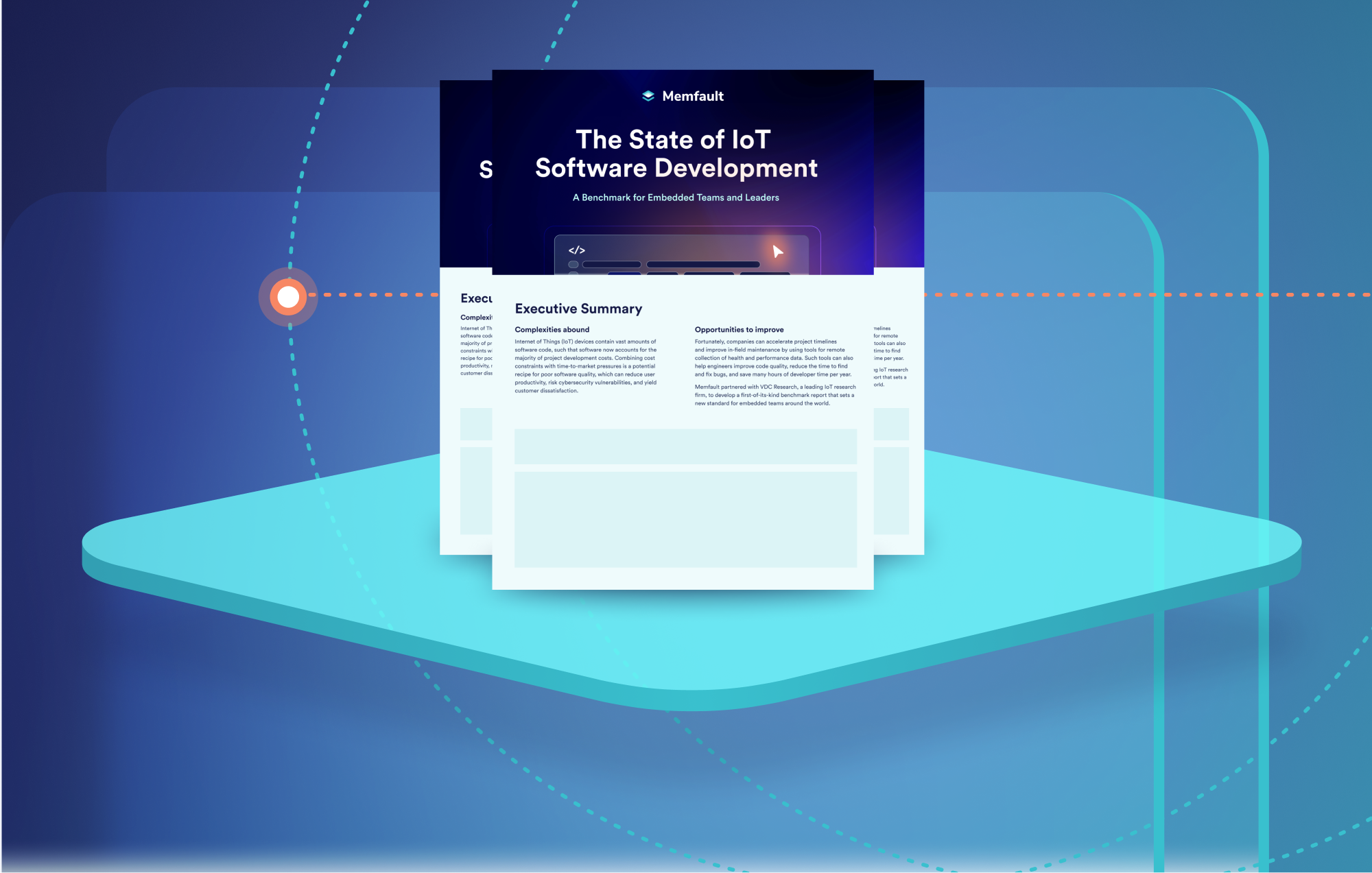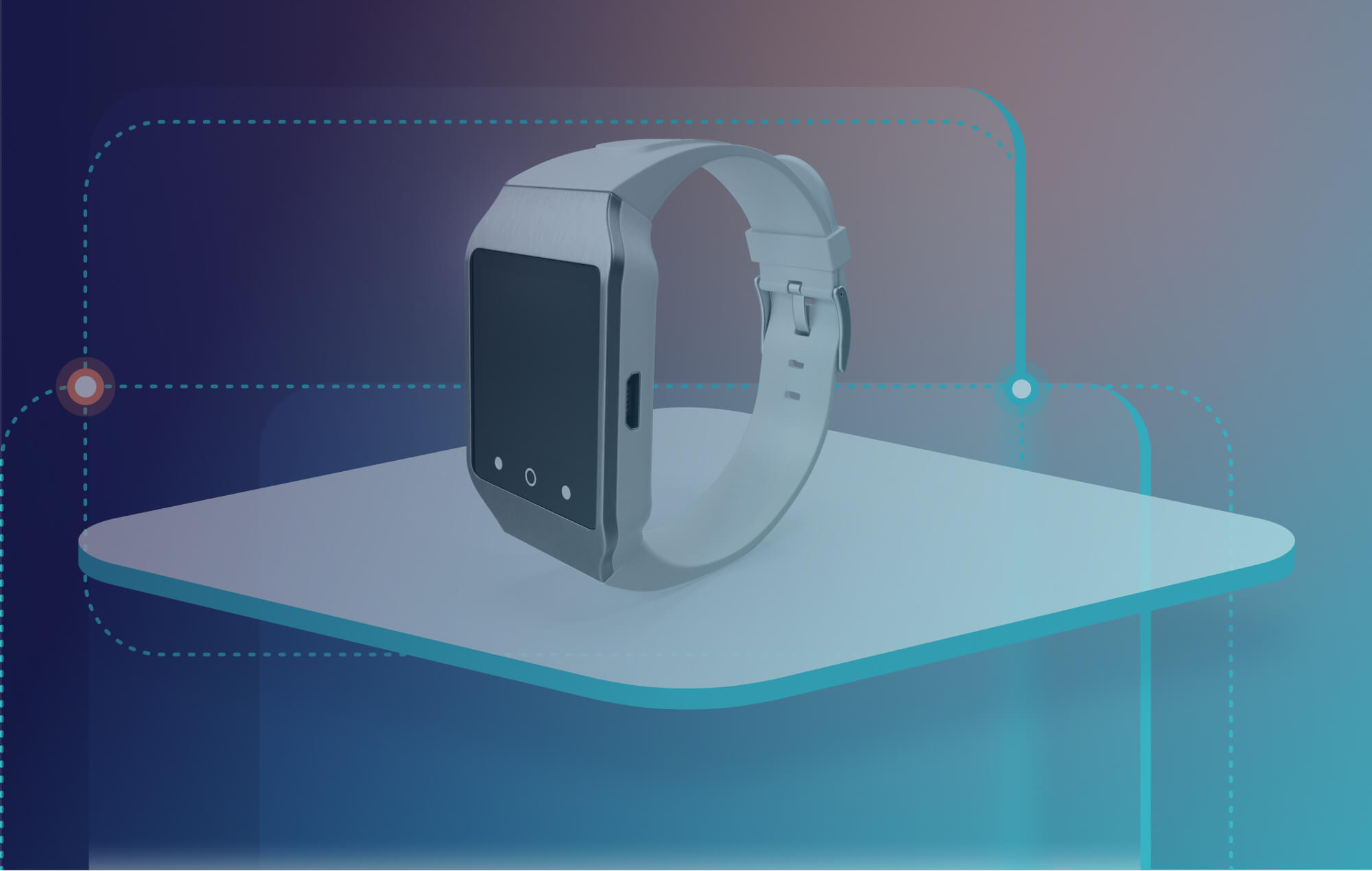Share
The findings from our 2024 State of IoT Software Development report reveal one thing loud and clear: the era of hardware-centric thinking is over. Software now dominates the IoT narrative. It accounts for a significant portion of project budgets and has a profound influence on product quality and competitiveness.
Consider these eye-opening statistics from IoT product development companies:
- Software Costs Rule: A staggering 60% of an IoT project budget is allocated to software expenses, with embedded software development constituting the largest single project cost at 29%.
- Code Complexity: The average IoT product boasts over half a million lines of code, underscoring the depth of software integration in modern IoT solutions.
- AI/ML Acceleration: 48.4% said they expect to include artificial intelligence or machine learning in their IoT product development in the next three years.
This shift towards software-intensive development should not be underestimated. Traditionally, IoT development teams focused predominantly on hardware components, overlooking the critical role of software. However, this oversight comes at a price—product quality suffers, and innovation stagnates.
Guidance for IoT Developers
There is very little guidance out there for developers who are building IoT devices. That’s a big part of why Memfault was excited to partner with VDC Research to conduct The State of IoT Software Development report. We wanted to shed light on the growing importance and complexities of embedded software development, establish a benchmark to help IoT developers improve, and share best practices to guide their success.
If you are interested in hearing what IoT experts say about the research, I recommend watching a panel discussion I hosted with industry leaders from Samsara, Nordic Semiconductor, T-Mobile, Toast, and Ovyl.
Key Findings Reveal Opportunities to Improve IoT Products
Let’s take a look at some of the IoT Software Development report’s key findings and implications. The research uncovered several unsettling realities about the current state of IoT product quality and safety.
Delayed Bug Fixes for IoT Products
Half of respondents take a week or more to find and fix IoT software bugs.
And realistically, even that is probably optimistic. It typically takes a couple weeks to get to the bottom of the problem and several more weeks to solve it. In the agile software world, this timeframe would be unacceptable. It would be crazy to think about something being broken in a cloud application and it taking a month to fix!
Quality Assessment Blind Spots
of IoT development companies rely on customer complaints and external bug reports to gauge software quality
This an extremely risky proposition, especially when you consider that the vast majority of issues go unreported. If you’re relying on customers to tell you what’s wrong, you could be blind to 96% of bugs in the field. How is that okay?
Cybersecurity Risks in IoT Software
of IoT developers don't think their cybersecurity testing is up to snuff. And that portion rose to 50% among those whose projects were behind schedule.
It may sound surprising, but this was certainly the case for products I worked on in the past. Building secure devices and monitoring their security posture is hard. Most have to do it from first principles as there are few well-established best-practices in the industry.
All these findings highlight a crucial need for a mindset shift. IoT developers must recognize that they are, first and foremost, software engineers. And the same way software developers leverage tools and processes to ensure agility, quick fixes, and safety, we need to embrace third-party tools and solutions to expedite IoT product development cycles and enhance software quality.
The Imperative of Over-the-Air Updates (OTA)
The adoption of Over-the-Air (OTA) update capabilities is central to embracing this software-first paradigm. OTA functionality enables continuous improvement and responsiveness, traits inherent to successful software companies.
Surprisingly, 16% of IoT software companies still fail to collect health or performance data from their deployed devices—a critical oversight in an industry that demands real-time insights and adaptability.
As someone who worked as an embedded software developer for many years, I know that it’s the nature of the beast to be under stress. When engineers are under a lot of pressure to get the product out the door, how much time is there for crossing your t’s and dotting your i’s? Believe me, I get it. But like it or not, this will quickly become an issue after product launch.
You’ll encounter a whole new set of problems as you transition to this software approach to IoT product development. They range from product-ending to benign and everything in between. You need to have a plan and a strategy as to how you’re going to handle these, triage them, and solve them.
There are several key moments during IoT product development when you most need OTA:
- IoT Product Design. You’ll be having high-level conversations about what to do differently from your last product, such as “We need more data.”
- Pre-launch. OTA can help you accelerate testing when you’re gearing up for launch.
- Post-ship. Oftentimes, it’s not until after IoT teams ship a product that they realize they have no visibility into how their product is performing in the real world.
- IoT Product issues. If you experience a major problem that needs to be fixed, you’ll start looking for solutions, which will lead you to OTA.
The earlier in the process you ask about how you’ll fix issues after your IoT product is deployed, the better off you’ll be. Unfortunately, most people don’t know until it’s too late.
How to Think like a Software Company
Many of the companies that are stepping into IoT product development have business leaders with strong skills in areas like manufacturing, supply chain sourcing, shipping, and operations. Their expertise isn’t in software. It’s a relatively recent transition for these companies to think about how much they can save in maintenance costs by incorporating connectivity into their products.
Transitioning from being mostly hardware to mostly software means developing a new understanding of your business. It necessitates a strategic overhaul and it doesn’t happen overnight. It’s taken a while for the software world to get to the modern best practices we have today.
For businesses that find themselves in this boat, here are a few practical considerations to help guide your transformation.
4 Tips for Thinking like a Software Company
- Build Software Proficiency: Invest in upskilling teams and cultivating a software-first culture.
- Develop Visibility: Observability is key to building well-working products in this modern world of software-enabled devices. If you add monitoring and observability to your IoT product, you get to market faster. Save yourself the time so you can focus on what you need to.
- Prioritize OTA: You’ll encounter a whole new set of problems as you transition to this software approach to IoT product development. They range from product-ending to benign and everything in between. You need to have a plan and a strategy as to how you’re going to handle these, triage them, and solve them. Make regular updates a cornerstone of IoT product development to ensure agility and security in a rapidly evolving landscape.
- Elevate Security Standards: There are more devices connected than ever before. And the more data that is flowing, the more valuable it becomes to hackers. With cybersecurity concerns mounting, prioritize robust security measures from the outset of product design.
The journey towards embedded software excellence demands proactive adaptation and continuous learning. Just as the software industry evolved over decades to establish best practices, IoT developers must accelerate this evolution to ensure the integrity and longevity of their products.
Conclusion
The State of IoT Software Development report serves as a wake-up call to the industry. We must embrace this pivotal moment, recognizing that embedded software is no longer a peripheral consideration—it is the bedrock of IoT innovation.
The nature of software is that you can iterate on it so you can rapidly improve. So start iterating. Become more agile. Embrace the fact that you need to change.
We have a lot of work to do before we build that IoT software with the same rigor and quality that we do the rest of the device. Companies need a plan. Decide for yourself what your approach to this will be. By prioritizing embedded software expertise, adopting OTA capabilities, and elevating security standards, IoT developers can navigate this new terrain with confidence and purpose.
To all IoT stakeholders, let this report be a catalyst for change—a blueprint for building resilient, adaptive, and competitive IoT solutions. Embrace the software-first mindset, and together, let’s shape the future of connected devices with ingenuity and excellence.
Watch our panel discussion for more insights and practical advice. It was a great conversation!




